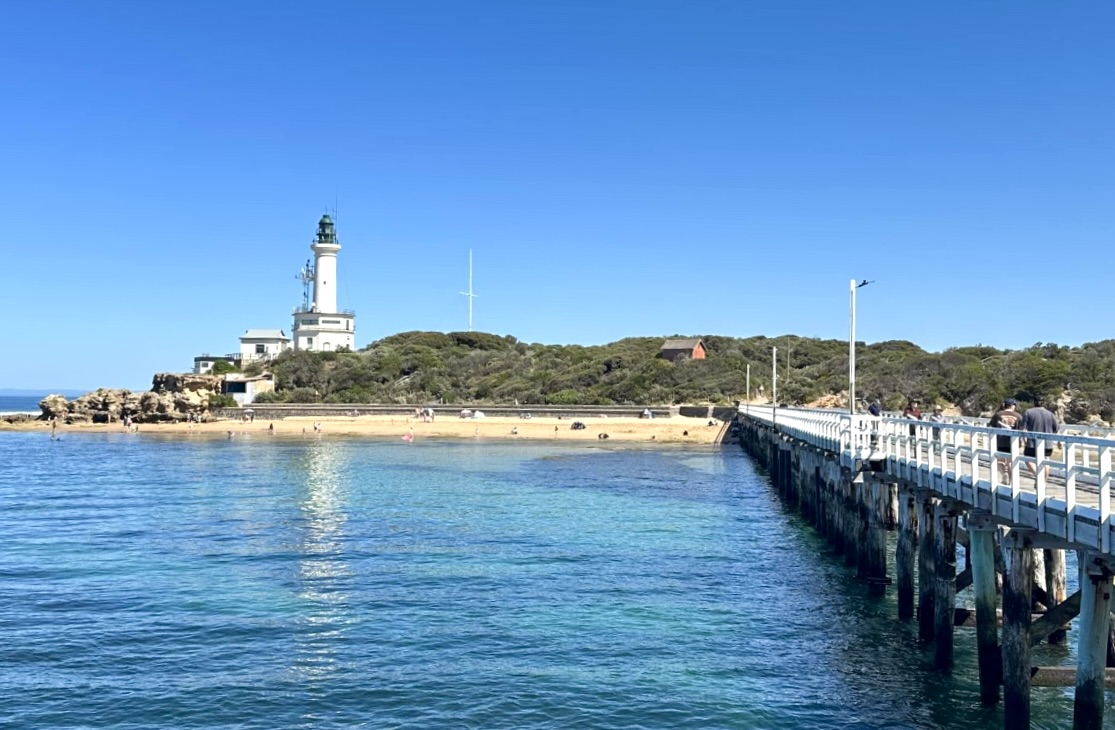
Point Lonsdale Lighthouse stands guard at the western entrance to Port Phillip Bay, positioned on the treacherous headland where the narrow passage known as “The Rip” meets the wild waters of Bass Strait. This cylindrical concrete tower, rising from the rocky outcrop of Point Lonsdale on the Bellarine Peninsula, has served as a crucial reference point for mariners navigating the deadly approaches to Melbourne since 1902, replacing an earlier wooden lighthouse that had warned ships of the hidden dangers lurking beneath the deceptively calm waters.
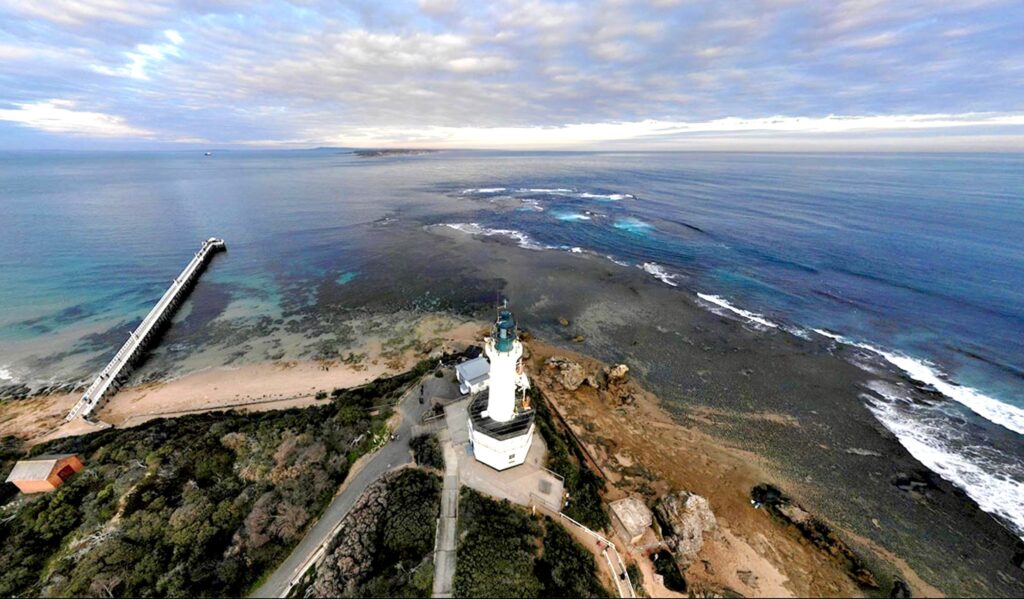
Perched on the limestone cliffs overlooking the entrance to Port Phillip Bay, the lighthouse commands sweeping views across the turbulent meeting point of Bass Strait and the bay’s powerful tidal flows. Point Lonsdale marks the western side of “The Rip,” the narrow 3-kilometre channel that acts as the marine gateway to Melbourne, where savage currents can reach 6 knots and submerged reefs wait to claim unwary sailors and their ships. The headland itself is a stark landscape of windswept cliffs, salt-sculpted vegetation, and pounding surf, where the relentless Southern Ocean swells crash against hidden shoals extending far offshore, creating one of Victoria’s most perilous maritime passages.
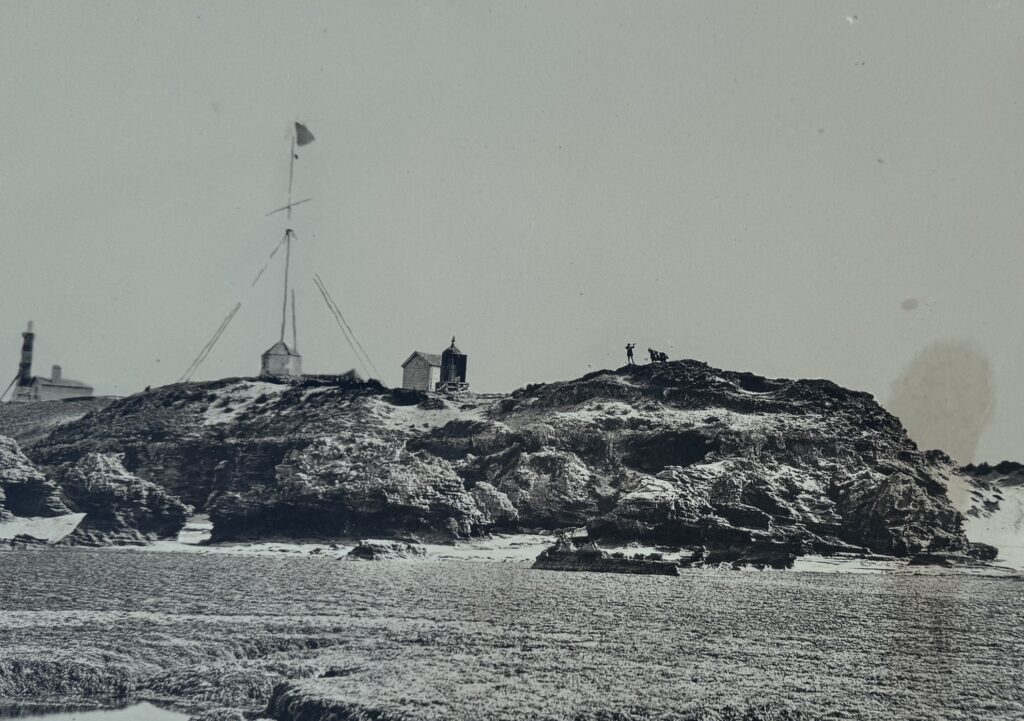
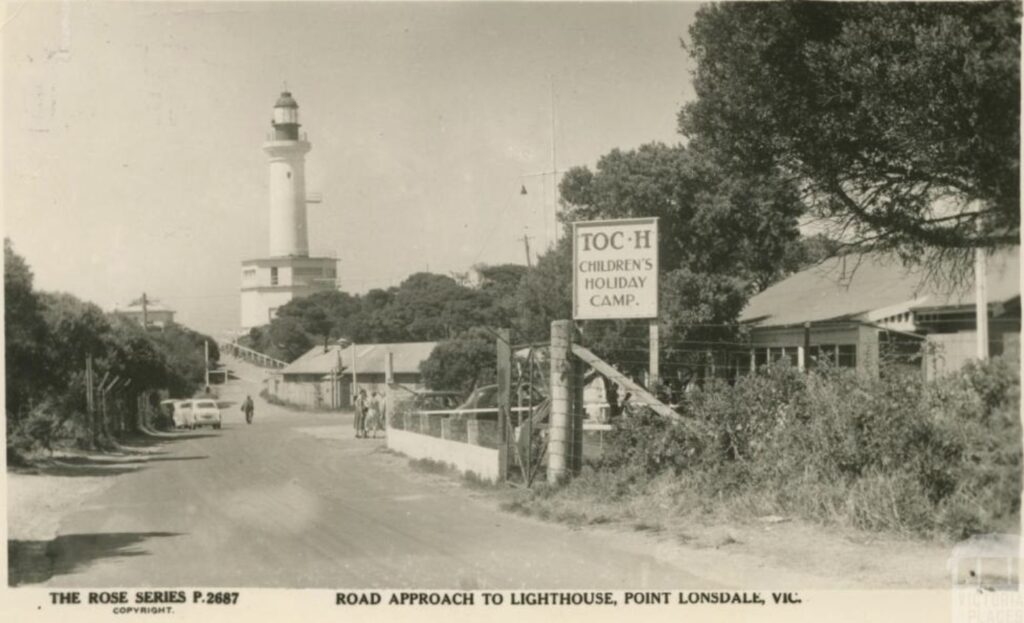
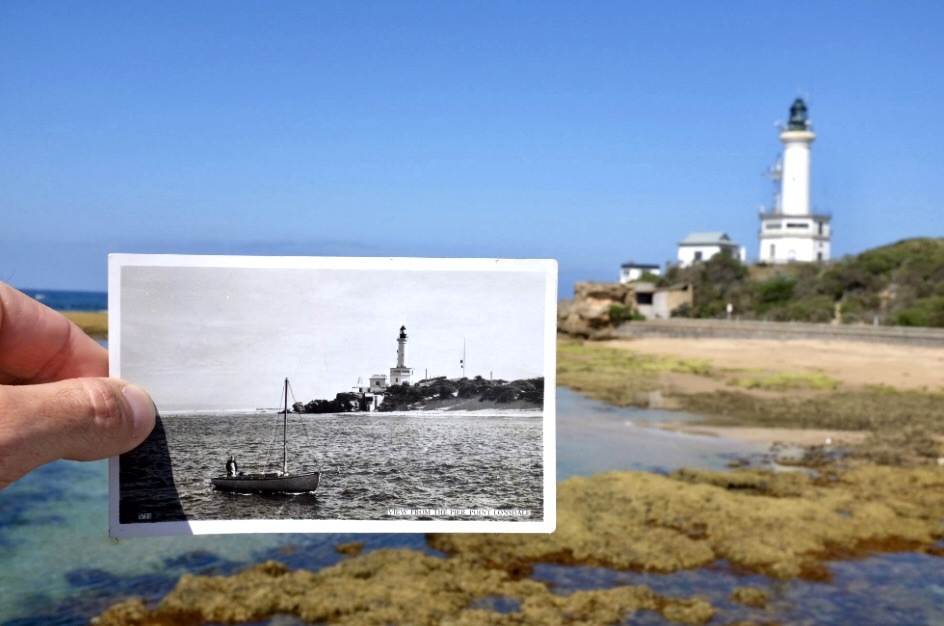
The Wathaurong people, traditional custodians of the Bellarine Peninsula, knew this coastline intimately for thousands of years before European arrival. Their deep understanding of the land and sea recognised Point Lonsdale as a place of both abundance and danger, where rich fishing grounds lay alongside treacherous currents and submerged hazards. The point’s strategic position made it a natural vantage point for observing the movements of marine life and weather patterns, knowledge that would prove invaluable to early European settlers and mariners who gradually learned to respect the waters that had long been revered by the indigenous inhabitants.
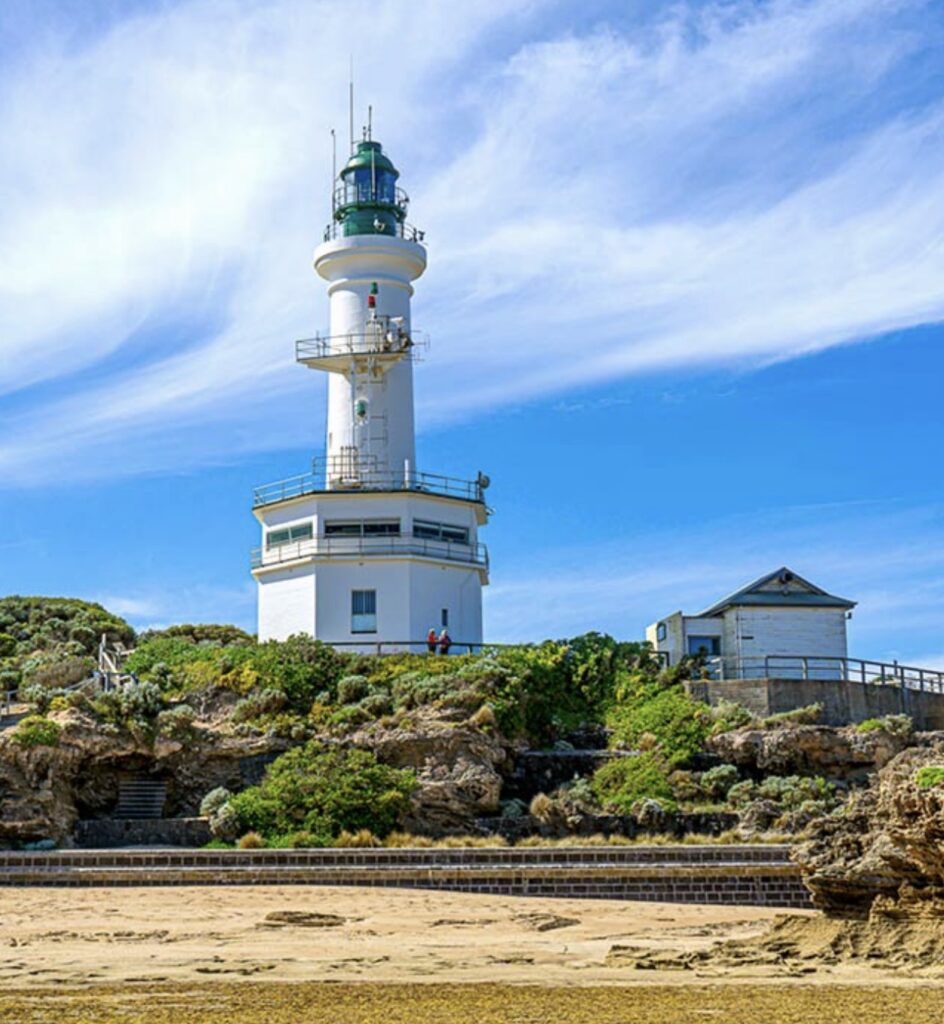
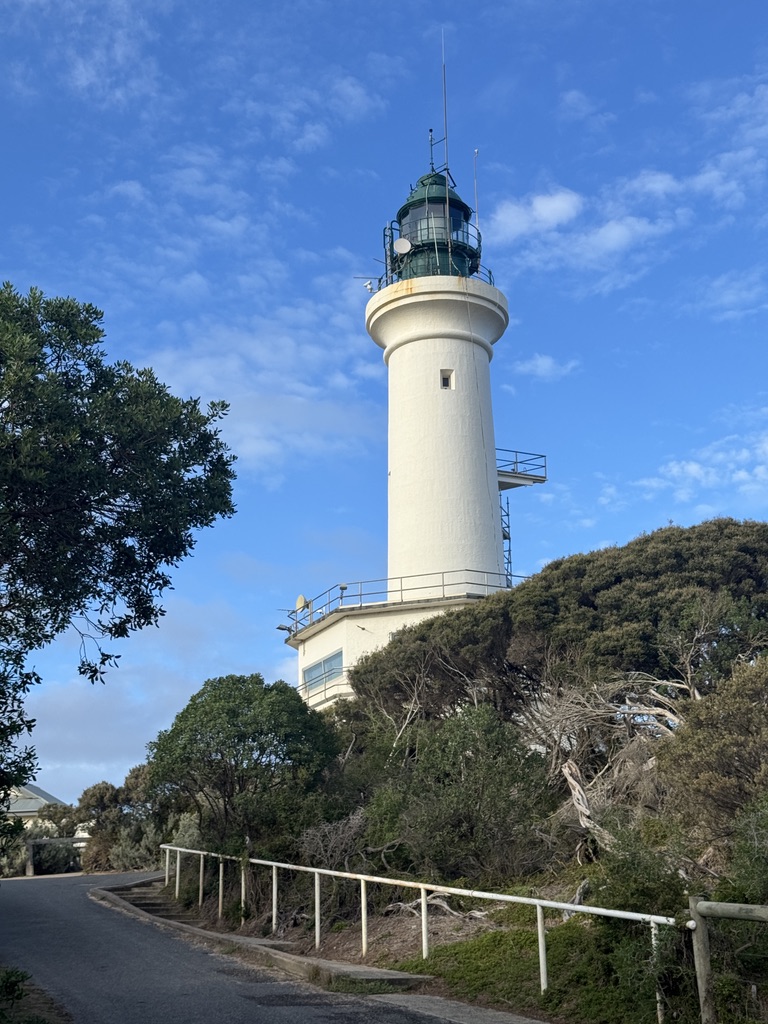
The pressing need for navigational aids at Point Lonsdale became tragically apparent as shipwrecks mounted along the entrance to Port Phillip Bay during the mid-19th century. The gold rush era of the 1850s brought unprecedented maritime traffic to Melbourne, with immigrant ships, cargo vessels, and passenger steamers threading the needle through The Rip in ever-increasing numbers. Early disasters highlighted the inadequacy of existing navigation aids, as ships regularly struck the notorious Lonsdale Rock and other submerged hazards scattered across the entrance. The wreck of vessels like the Sacramento in 1853, which foundered near Point Lonsdale after striking reefs in heavy seas, demonstrated the deadly consequences of inadequate warning systems for the rocky obstacles that lay hidden beneath the surface.
Recognition of the urgent need for better maritime safety led to the establishment of the first signal station at Point Lonsdale in 1852, followed by a wooden lighthouse in 1863. The wooden lighthouse, previously at Shortland Bluff, Queenscliff, was moved to Point Lonsdale but the light was not used until 1867. This relocated structure served for nearly four decades, warning vessels of the dangers while lighthouse keepers maintained their lonely vigil in quarters that were also constructed during the 1860s along with a telegraph station to coordinate rescue efforts and communicate with other stations along the coast.
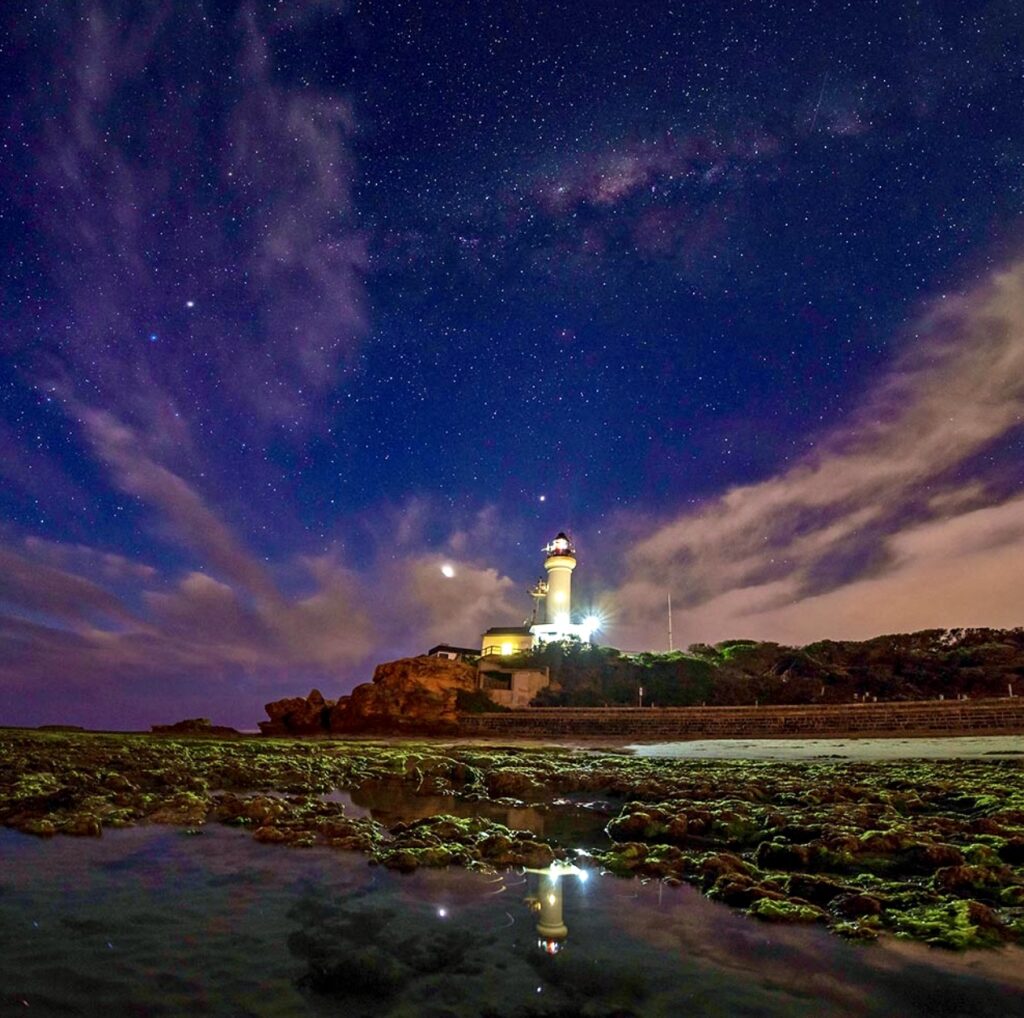
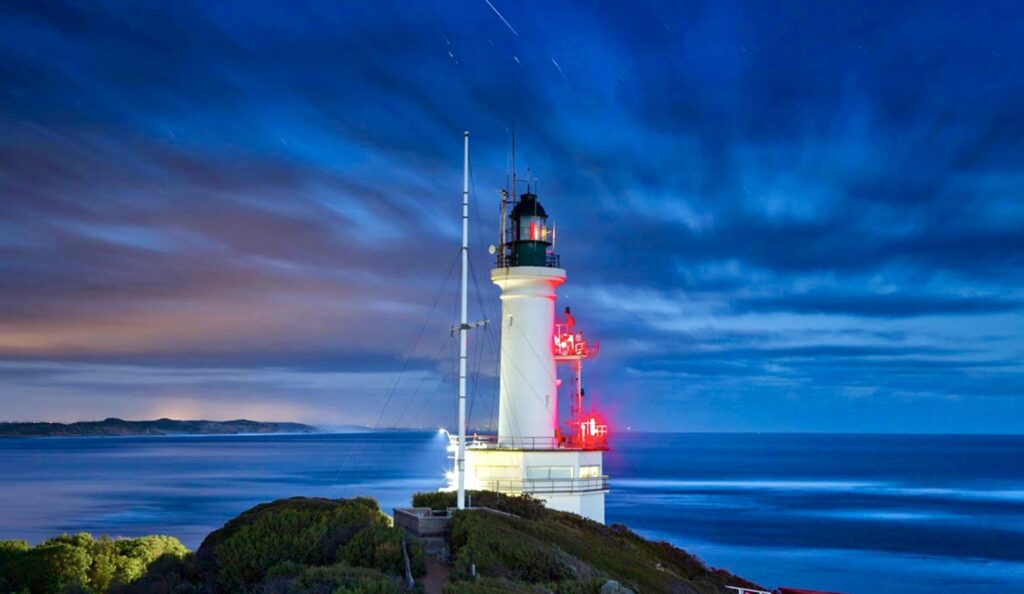
The current lighthouse, completed in 1902, was designed by the Victorian Public Works Department and erected by the contractors Coate Brothers. The construction of the present concrete tower represented a significant upgrade in both durability and visibility, replacing the aging wooden structure with a solid cylindrical tower designed to withstand the fierce gales and salt spray that regularly lashed the exposed headland.
The new lighthouse featured a traditional design with modern engineering, incorporating lessons learned from decades of experience along Australia’s most dangerous coastlines. Workers faced the familiar challenges of lighthouse construction in exposed locations: howling winds that could halt work for days, the difficulty of landing materials through heavy surf, and the isolation that made even minor injuries potentially serious. The project required careful coordination of supplies and labour, as Point Lonsdale remained accessible primarily by sea until the railway extension reached the area in 1879.
The lighthouse began operations with oil lamps providing its light, later upgraded to acetylene gas illumination before eventually converting to electric power. Keepers maintained meticulous logbooks recording weather conditions, shipping movements, and the occasional dramatic rescue as distressed vessels battled the treacherous conditions around the point. The isolation of the posting bred its own legends and superstitions, with families developing their own traditions and folklore around the endless cycle of ships passing safely or meeting disaster on the hidden reefs.
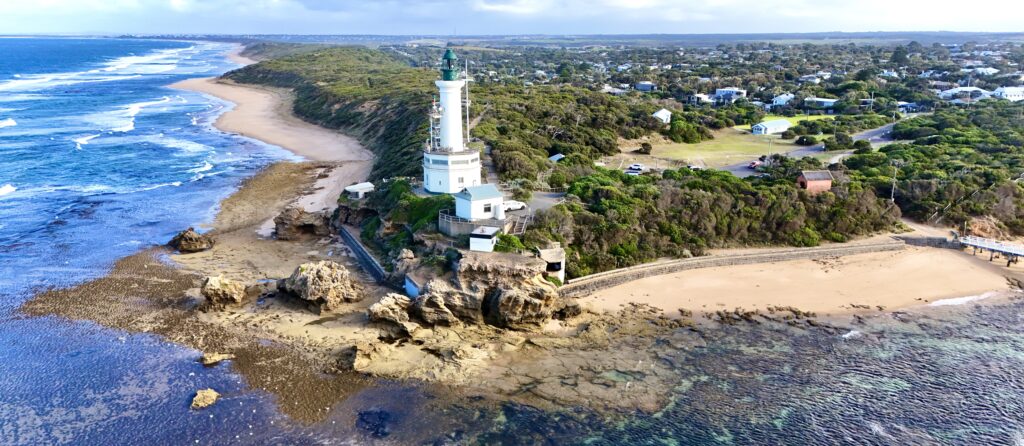
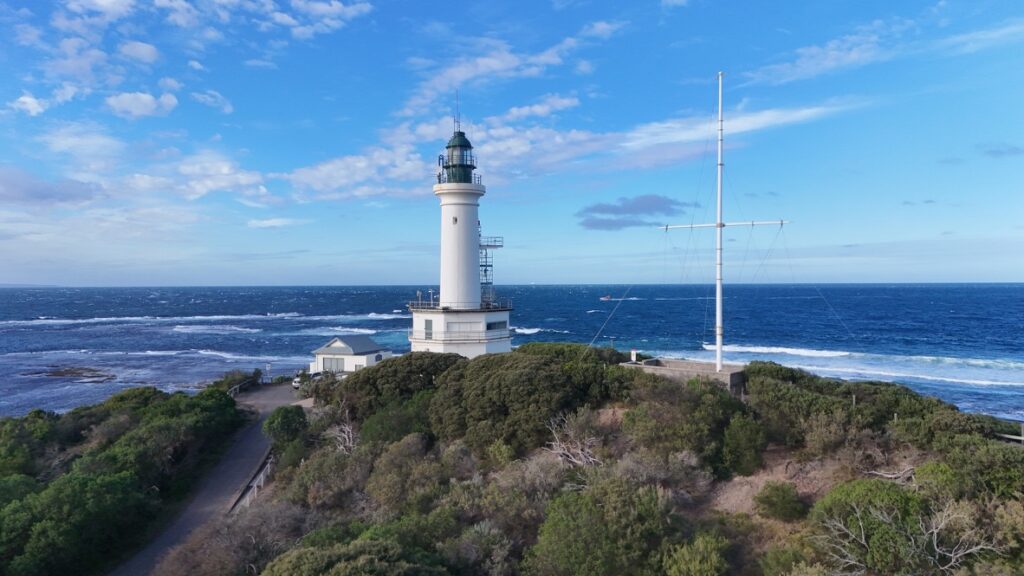
The lighthouse precinct buildings, including a foghorn shed built in 1884 and an explosives shed (later used as a rocket shed) built in 1891, expanded the station’s capabilities for maritime safety. The foghorn became crucial during the frequent thick fogs that could blanket the entrance to Port Phillip Bay, while the rocket apparatus provided the means to establish lines to ships in distress, potentially saving lives when vessels foundered close to shore.
During World War II, Point Lonsdale’s strategic position took on military significance as part of the coastal defences protecting Melbourne and its vital port facilities. A new concrete gun emplacements were constructed in 1942 and the lighthouse keepers found themselves sharing their isolated domain with military personnel as the war brought new urgency to the surveillance of Bass Strait and the approaches to one of Australia’s most important cities.
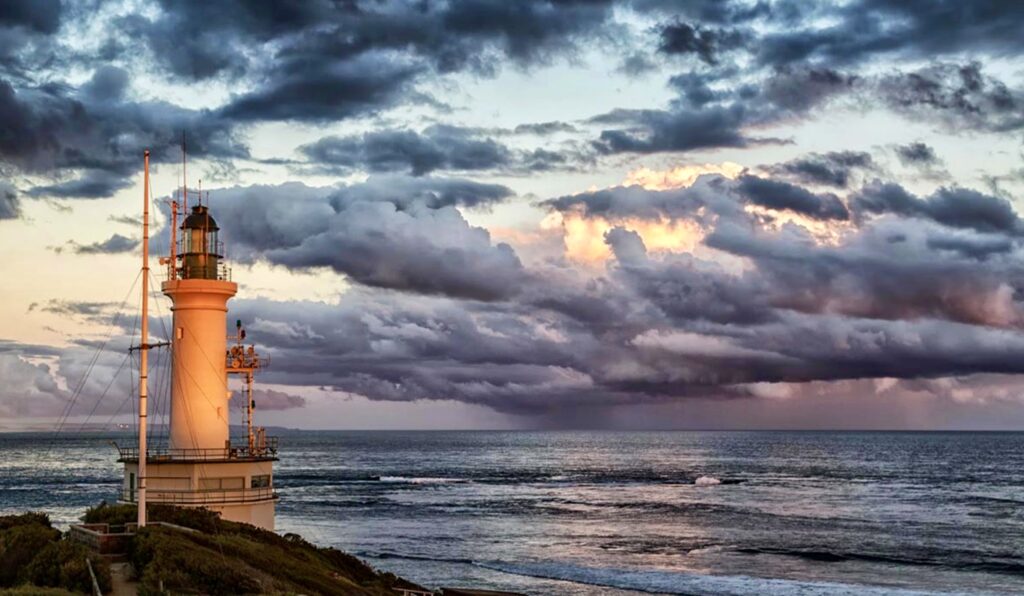
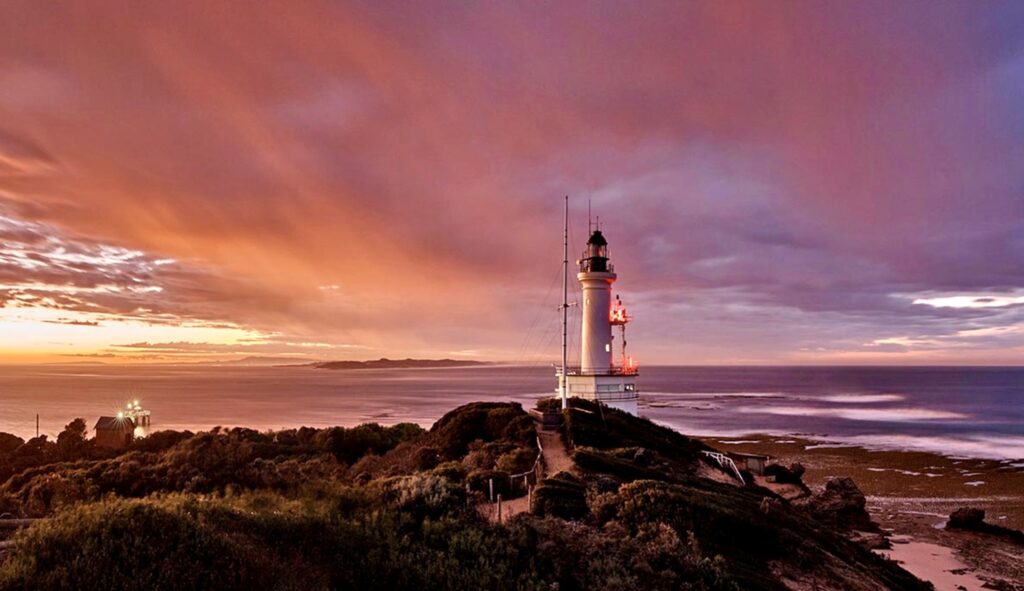
The era of manned lighthouses ended at Point Lonsdale in 1999 when automation finally replaced the human presence that had maintained the light for over a century. Modern maintenance crews now service the solar-powered LED array that continues the lighthouse’s mission of guiding vessels safely through The Rip, though the romantic age of lighthouse keepers and their families living in isolation has passed into history.
Today, Point Lonsdale Lighthouse remains an active navigation aid under the Victorian Ports Corporation, its automated beacon continuing to warn mariners of the dangers that claimed so many vessels in earlier eras. The lighthouse and its precinct buildings stand as monuments to maritime heritage and the ongoing struggle between human enterprise and the relentless forces of wind, tide, and sea that continue to make this stretch of coast one of the most challenging in Australian waters.

Technical Details
Point Lonsdale Lighthouse
- First Exhibited: 1867 (wooden predecessor), 1902 (current structure)
- Status: Active (automated)
- Location: Point Lonsdale, Bellarine Peninsula, Victoria
- Construction: 1902, cylindrical concrete tower
- Designer: Victorian Public Works Department
- Contractor: Coate Brothers
- Tower Height: Approximately 18 metres
- Material: Reinforced concrete
- Design: Traditional cylindrical tower with capital
- Original Power Source: Oil lamps
- Power Evolution: Oil (1902-1934), Electric (1934-1999), Solar LED (1999-present)
- Range: Originally 10 nautical miles
- Current Operator: Victorian Ports Corporation